Serendipitous Searches
Growing the family tree by chance findings and wild speculation
Firm Foundations
It is essential that a family tree is founded on sound roots and that each addition can be proved to relate to the established tree. Thus a birth certificate leads to the parents and their marriage. Locations, dates and names lead to census returns, fanning out to siblings and co-resident relatives.
Census returns are easily misused, I found that my great-grandmother had been ‘stolen’ and given a false husband by someone who had put their family tree on the internet. Faced with two young girls of similar ages living in a small village, sharing a common name, they had chosen to add my great-grandmother falsely to their tree. How did I know that I was right? Well fortunately she had lived long enough to be known to my father and in addition she had made and kept a list of all her siblings and their ‘dates’, leaving no doubt whatsoever where she fitted in the census.
Clutching At Straws
Sometimes there are no obvious links to be made and we have to grasp on to passing titbits that more than likely don’t belong to our tree at all.
When I first started on my family tree I got as much information as possible from my father and his sisters. He had some old papers from his maternal grandmother but he didn’t know a lot about his paternal grandfather, thinking him to have been a single child and whose father was, perhaps, called Andrew, neither of these things turning out to be true. At that time the statutory records in Scotland could only be searched for in person at New Register House in Edinburgh and copies of the records were embossed, signed by the registrar, and cost £10 each, so only to be ordered after very careful considertation.
Shortly after this I went to work and live in Fife and, not having anything more to go on, I would from time to time visit graveyards in the area. One stone that caught my eye was this obelisk at Corstorphine, bearing the name ‘Slimon’. That was of interest because my father had had an aunt called Barbara Slimon Shaw, however there was no obvious connection, the stone being from a different time period than the aunt and not even bearing the name ‘Barbara’. My father didn't expect any family connections in that area anyway, as his father had only moved to Edinburgh for work reasons, being born elsewhere.
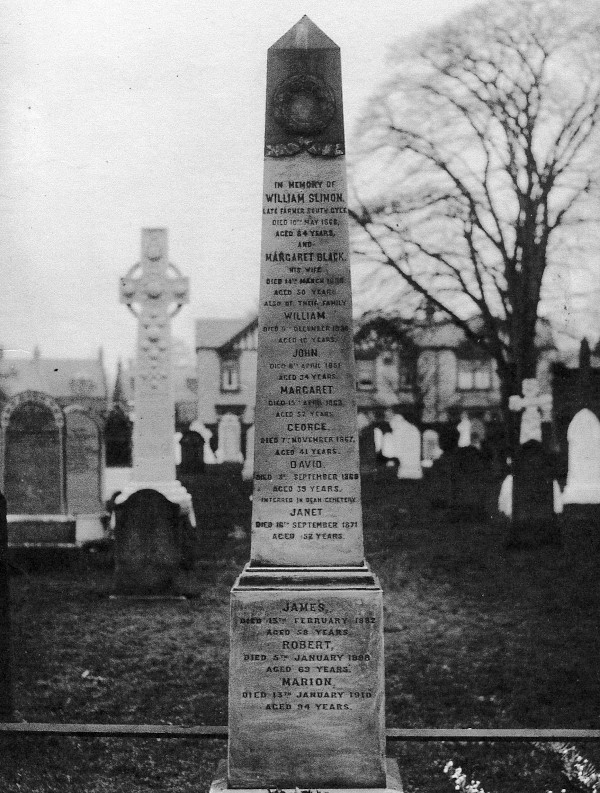
In memory of William Slimon late farmer South Gyle died 10th May 1866 aged 84 years and Margaret Black his wife died 14th March 1838 aged 50 years and their family William died 9th December 1830 aged 16 years John died 8th April 1851 aged 34 years Margaret died 15th April 1863 aged 52 years George died 7 November 1867 aged 41 years David died 3rd September 1869 aged 39 years interred in Dean Cemetery Janet died 16th September 1871 aged 52 years James died 13th February 1882 aged 58 years Robert died 5th January 1898 aged 69 years Marion died 13th January 1910 aged 94 years.
Shortly after finding this obelisk I discovered that a relative had a photograph of it. Perhaps she could provide the link? It turned out that a neighbour had come upon the stone by accident and taken the picture, on the off chance that it belonged to my relative's family. Another dead end.
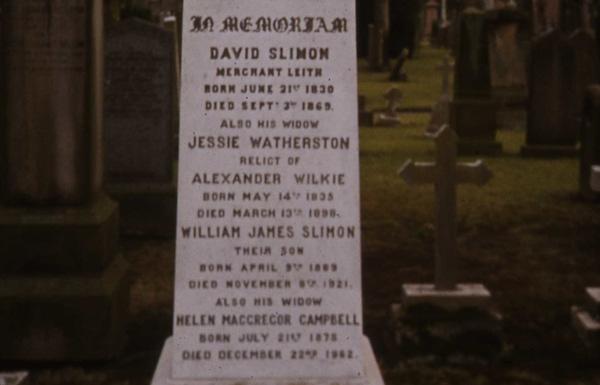
I had come across another Slimon memorial in the Dean cemetery, Edinburgh, standing alongside a massive one dedicated to the Whatherston family. Later I realised that this was the memorial referred to on the Corstorphine obelisk, so at least all these Slimons were related.
Building back the family tree using official records, the index for Scotland now being online, I decided that I could be fairly confident in paying for an official copy of one of great-great grandmother’s certificates. (It is always a case of carefully examining the index to find a most-likely match, but even then there is no guarantee that it is for the right person). On receiving the certificate I was quite sure that I had the right person and from this I could see that this was where the Slimon name had come from. Not only that but her father had been William Slimon and her mother Margaret Black, but as she herself didn’t appear on the obelisk, nor did she appear to have any connection to Edinburgh I had to assume that it was just a coincidence of names.
Organic Growth
Once images of the Scottish records became available online my researches became more systematic, ‘unofficial’ copies of the records could now be obtained for a fraction of the cost of the ‘official’ ones, providing a sound basis for growing the family tree, linking record to record.
Now I knew that my ‘single’ great-grandfather was one of thirteen and that ‘Andrew’, his father, had really been Joseph. Further I was able to establish what had happened to all of my great-grandfather’s siblings, except his youngest brother William Marshall Shaw.
From time to time my aunt would recall a family reunion in the 1930s. Two ‘Irish priests’ had turned up, one had been called Donald, they had been Roman Catholic whereas the family was Protestant. She, of course, had only been a little girl at the time. I carried out a few searches on the internet looking for likely Irish priests but nothing showed up.
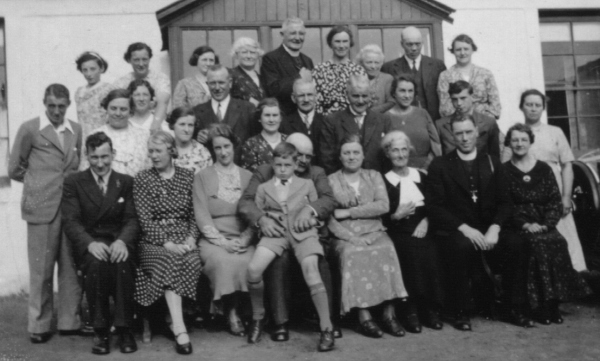
In 2005 my father’s cousin Margaret died and as a result I visited her son and we looked through her collection of photographs. Among them was a group photograph, taken at the family farm, with two priests clearly present! There was also a second photograph with the priests on their own. The younger priest had a clear family resemblance to my grandfather. My aunt had been right.
Meanwhile I had been searching for William Marshall Shaw. The internet turned up two, one with the wrong dates in the USA and the other, a possible, in Australia. According to a published family tree this William had married an Australian, Ellen O'Grady and had had three children, Robert, Donald and Mary. At first I didn’t think any more about it. Without access to the Australian records it wouldn’t be possible to prove that I had the right William Marshall Shaw, besides even then the proof might not be there as people born outside an area are often recorded in very general terms geographically , i.e. only by nationality.
Then one night the thought came to me. Ellen O’Grady was probably a Roman Catholic and if so the children could well be too. Might Donald have gone into the priesthood? Bear in mind that at this time there was no evidence that this Donald was related to me at all.
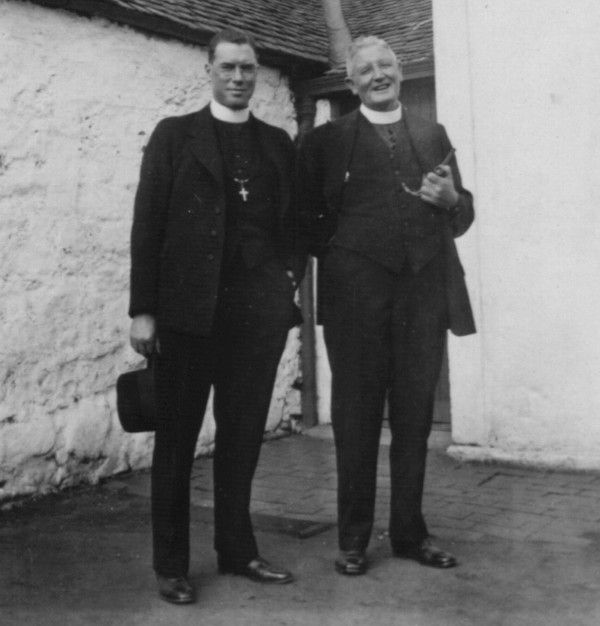
Searching now for Australian priests I find one, Fr. Donald Shaw in Tasmania. He founded a school there. Pure speculation now, I emailed the school with a photograph of our farm priests. A day later the school secretary replies that she had been a school girl there and remembered Fr. Donald Shaw and that was him in the photograph!
A branch found, but now to link it back.
When my great-grandfather and his brother William Marshall Shaw were growing up they lived at their father’s farm, Carrickstone, in Cumbernauld. The adjacent farm was farmed by the Main family. As time went on brother John Shaw married Agnes Main and Thomas Main married sister Janet Shaw. George Main emigrated to Australia, keeping a diary of his journey, inherited by a descendant of his, Margaret Scala, who became a valued internet correspondent of mine. Margaret was able to locate the marriage record for William Marshall Shaw, formally proving what had been found by speculation.
The marriage record for William Marshall Shaw revealed that George Main had been a witness, showing that the bond between the two families had extended to Australia. It also gave Margaret pause for thought as she had inherited George Main’s diary of his trip from London to Sydney in which he mentioned ‘William’. She had always assumed that this was George’s brother but might it have really been his brother-in-law? While that is a possibility the passenger records for Selembria confirm that George Main, William Main and William Marshall Shaw all arrived together at Sydney on 22 January 1888.
Margaret was also able to formally link Fr. Donald Shaw with William Marshall Shaw by means of death certificates and William’s will. It is perhaps just as well that I had been able to link Fr. Donald Shaw to his Scottish family as time, distance and poor recall meant that the names of William’s parents weren’t correctly recorded, not uncommon I think and a trap for the unwary.
Where There Is A (William Slimon's) Will
Wills and Testaments had been added to the searchable records online and I had had some success with these as names of trustees and names and addresses of beneficiaries sometimes provided new evidence for family links.
Had William Slimon left a will? Yes, but was he the right one? The obelisk put William Slimon at Corstorphine or South Gyle, on the west of Edinburgh, there were testamentary records for a William Slimon, but in Leith, to the east of Edinburgh, at least the dates seemed reasonable.
Taking a chance I downloaded the testament, at the worst it must surely be a hitherto unknown cousin. But no, here were sons David, James, and Robert being proposed as trustees and daughters Marion and Janet and son George as beneficiaries, all names to be found on the obelisk. Unfortunately Barbara’s name was still missing. Either there had been some falling out or William was only making provision for his unmarried daughters and, possibly, a dependent son, George. (George was to die barely 18 months after his father, it might be interesting to discover the cause).
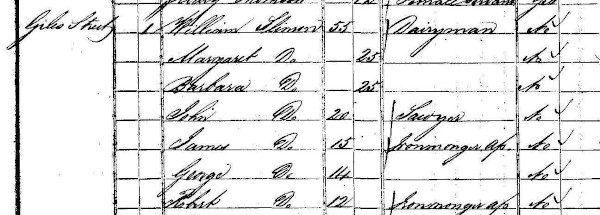
Having established a Leith connection was it possible to add to evidence for South Gyle? The simplest check here was to search the census records, the earliest of which online is for 1841. This didn’t find William Slimon at South Gyle but again in Leith, and in the same street as in his testament twenty years later. I concluded that by the time of these records he had retired from farming and settled in Leith, along with daughters Margaret and Barbara and sons John, James, George and Robert. (A note of caution: The ages of people recorded on this census were often rounded to the nearest five years.) At last, Barbara is formally recorded alongside most of her family! It is interesting that William now has the occupation of Dairyman, possibly keeping cows, something he most likely did as a farmer.
What remains a mystery, going back to the beginning, is why was Barbara ,who wasn’t the last surviving sibling, not recorded on the obelisk? It is understandable that her father might have made no provision for her, being a married woman and therefore another man’s responsibility but was the exclusion from the obelisk deliberate or lack of knowledge by the obelisk’s commissioner?
Seeking Someone With No Name
I came across a letter written by my mother in 1995 in which she speculated that her grandfather might have had two sisters, one unknown to her, because a ‘cousin’ had sent the family food and clothing parcels during the war. She thought that it had been from a Canadian family called ‘Begg’, ‘but they had lost contact’.
As it happened I had an old family address book out at the time and I thought that all the Canadian addresses in it related to my father’s time in Canada but I glanced through it anyway. There was a Mrs. David Begg of Toronto, an entry suggesting that she was a widow. What was her first name, what was her maiden name, where did she fit in?
By further chance I had obtained hitherto unseen photographs recently. Photographs are nice in that they literally ‘put a face to a person’ but they don’t necessarily belong to the family, they might just be ‘that nice couple we met on holidays’. And so it was the case here, some people were familiar to me, some completely unknown.
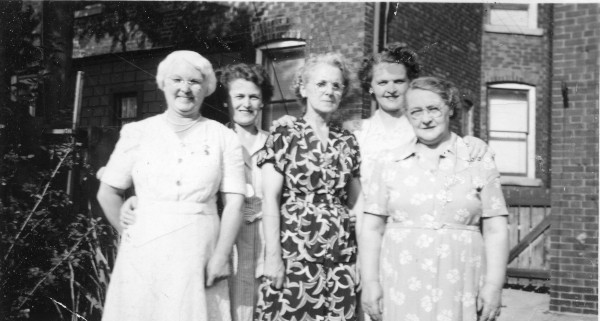
In one of those 'not really thinking about it' moments it occurred to me that one set of these photographs had Canadian-style housing, whatever that is. Giving them closer examination I became even more convinced and, using the internet, obtained an oblique view of the rear of the house in Toronto listed in the address book. From that view I could see that the houses in that road were wider at the front than the back and that the transition was made by a wall at 45 degrees with inset windows, just as could be seen in some of these unknown photographs.
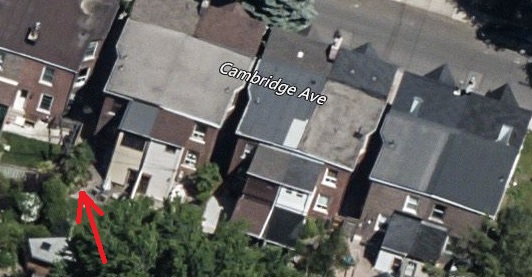
Fortunately these photos had writing on the back, unfortunately the person of interest to me called herself ‘I’ – the lady still had no name. But what she did have was a strong family resemblance to my mum’s grandmother, not her grandfather. This lady had no sisters but had had several half-sisters, might the Canadian be one of them?
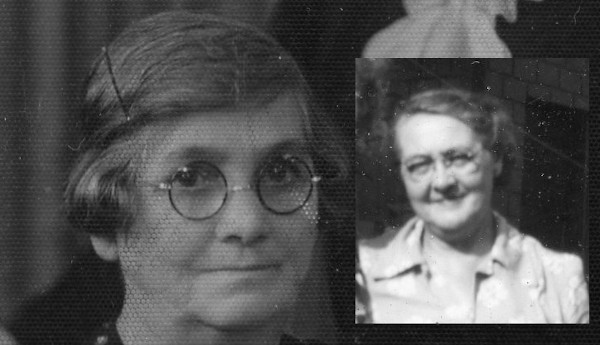
Searching Canadian records for a spouse for a David Begg produced nothing suggestive of a family connection. I then thought of trying the street directories for Toronto, perhaps with the idea that David Begg would replaced by his wife at some point. Checking the 1950 directory showed an entry for the house but no Begg name. Going back to 1940 and there was a ‘David Beggs’, right person, mis-spelled name. More directory checks and I found that his was the only family member listed over the period, i.e. never his widow, and the directory continued to mis-spell his name. Or had they?
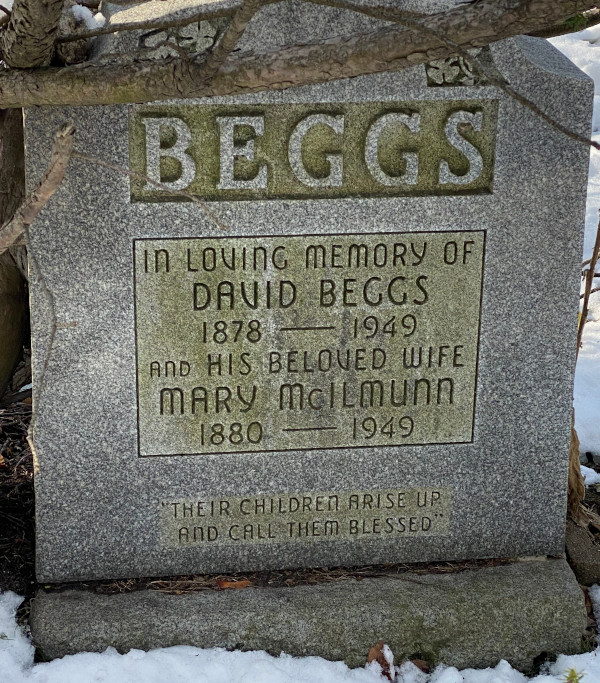
Searching with the ‘Beggs’ spelling brought up a memorial in a Toronto cemetery, making the death of David Beggs in 1949 and his wife Mary McIlmunn, also in 1949. That would agree with the street directory entries, i.e. no ‘Beggs’ for 1950. The Irish surname McIlmunn isn’t the commonest but it does happen to be the maiden name of my mum’s grandmother’s mother! Did she have a brother who had a daughter who emigrated to Canada? If she did then Mary McIlmunn would have been a first cousin to my mum’s grandmother.
I couldn't find the family in any of the available Canadian census data nor on immigration records so I had no idea how long they had lived in Canada or if they had been born there. Was the Beggs line Canadian or Irish? Then a relative said that they thought that the Beggs family lived in Donaghadee, Northern Ireland and even that the photograph of the supposed Beggs ladies had been taken there! (I don't believe that for a moment).

Searching the 1911 Census for Ireland produced a positive result, here at 39 Moat Street, Donaghadee were David Beggs, 32, his wife, Mary, 30, their sons, William, Thomas and David, 6, 3 and 1 month respectively, and their daughter, Edith, 4. Right ages, right names and even a daughter 'Edie'! Also in the house was Mina McWilliams, 21, sister to Mary. Daughter Edith had a second name 'McWilliams'. David and Mary also had and a fifth child who had died before this census.
Going back to the 1901 Census for Ireland David and Mary can both be found in Donaghadee, living with their parents. Mary's mother is recorded as being widowed, presumably for a second time as she is now using the surname McWilliam.
That now leaves the question of the name of Mary's father and perhaps further research into what became of the Canadian side of the family.